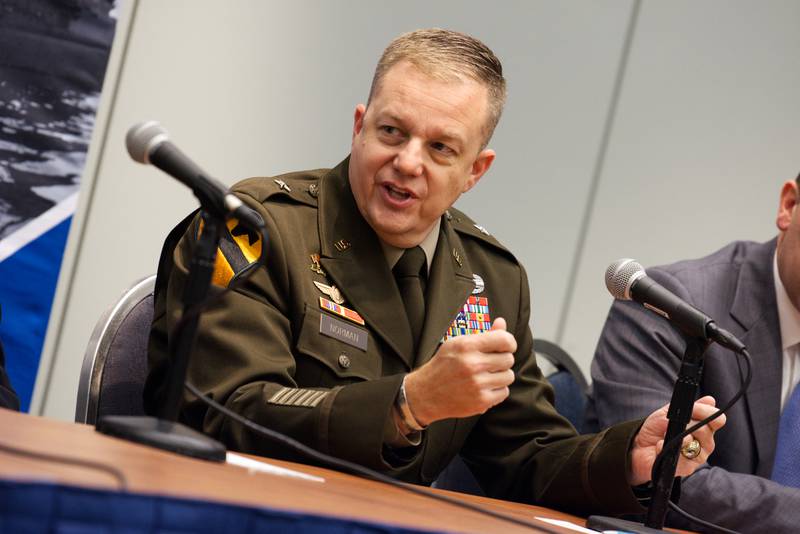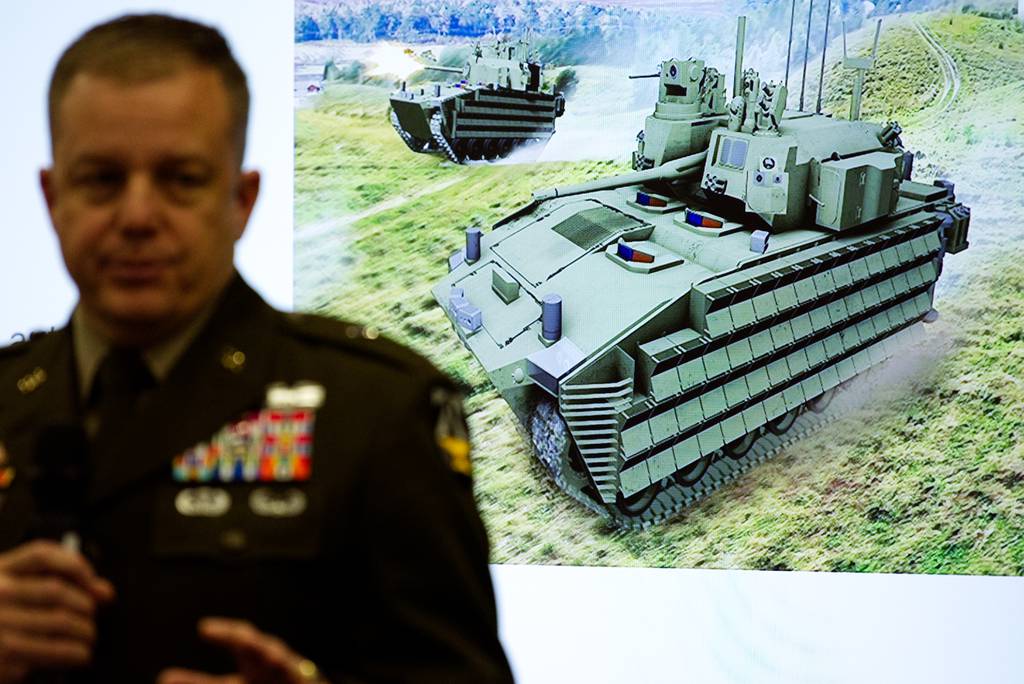WASHINGTON — The U.S. Army will lean on artificial intelligence to assist two fundamental abilities aboard the forthcoming Bradley infantry fighting vehicle replacement, officials said.
Brig. Gen. Geoffrey Norman, the director of the Next Generation Combat Vehicles Cross-Functional Team, said both AI-enabled targeting and navigation are “absolutely essential†for the Optionally Manned Fighting Vehicle, or OMFV.
“What we’re seeking initially is well within the realm of the feasible. We’ve demonstrated those capabilities in the field in really rigorous environments,†Norman said Oct. 12 at the Association of the U.S. Army annual conference. “But as we look toward the future, and what we want to see downstream, we want to be able to accept maturing technologies.â€
The Army this summer published a request for proposals to design and build prototypes of the OMFV. Bids are due next month, according to Maj. Gen. Glenn Dean, the Army’s program executive officer for ground combat systems.
The service tapped five companies for preliminary designs: Oshkosh Defense, BAE Systems, General Dynamics Land Systems, American Rheinmetall Vehicles and Point Blank Enterprises.
RELATED

Underpinning the needs of OMFV is work already underway “in the sensor space, the work that’s going on in developing algorithms, and developing that AI stack,†Norman said. Digital engineering — construction of virtual models that account for every inch of a complex product — is playing a key role in development, as well.
The Pentagon has for years recognized the value of AI, both on the battlefield and backing its infrastructure, and is investing significantly; the department’s public spending on AI, including autonomy, mushroomed from a little more than $600 million in fiscal 2016 to $2.5 billion in 2021.
More than 685 AI projects, including several tied to major weapons systems, were underway as of early 2021, according to a Government Accountability Office inventory. At least 232 projects are under the Army umbrella.
Norman on Wednesday said the near-term AI focus for the Bradley replacement is driven by soldier feedback and other hands-on experimentation.
“We believe,†he said, “that there are solutions available now to meet our needs for OMFV.â€
Colin Demarest was a reporter at C4ISRNET, where he covered military networks, cyber and IT. Colin had previously covered the Department of Energy and its National Nuclear Security Administration — namely Cold War cleanup and nuclear weapons development — for a daily newspaper in South Carolina. Colin is also an award-winning photographer.








